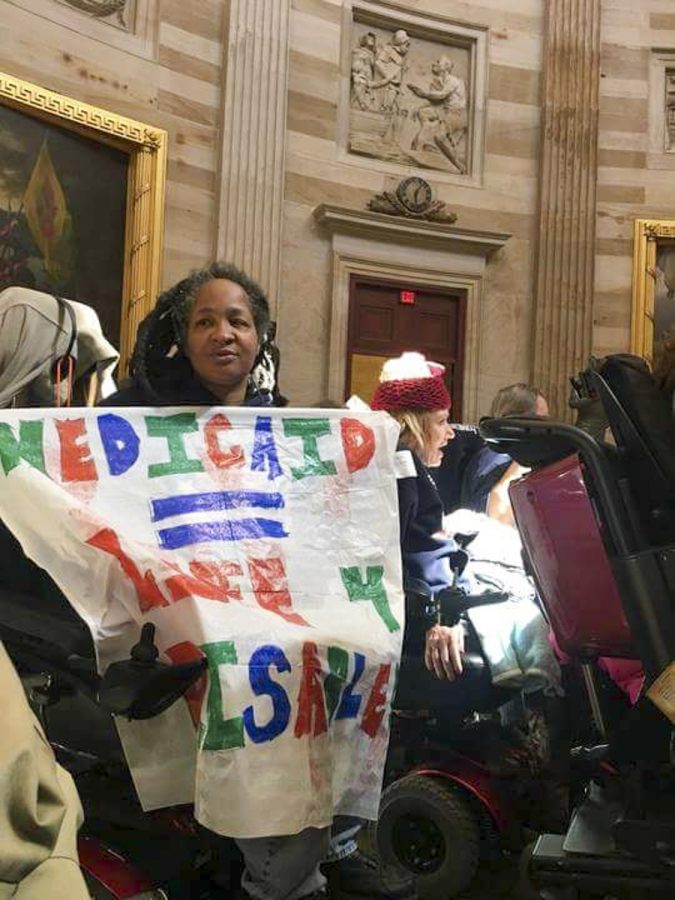‘We were making history’
Activist Anita Cameron spoke about her involvement in the fight for disability rights
Anita Cameron, activist and director of minority outreach for Not Dead Yet, spoke during the second event of WSU Access Center’s series.
September 24, 2020
Editor’s Note: This article has been edited to correct the name of Ericka Huggins, one of the members of the Black Panther Party.
When Anita Cameron helped others crawl up the steps of the Capitol, it was exhausting but worth it for the cause.
“I was one of them that participated in the crawl … and it was amazing,” Cameron said. “I knew we were making history.”
The WSU Access Center featured speaker Cameron who discussed the fight for disability rights in the second event of the Access Center’s lecture series Wednesday morning.
Anita Cameron, director of minority outreach for Not Dead Yet, said she joined American Disabled for Attendant Programs Today when she was 21.
Cameron said when she was growing up in Chicago, she had heard about the 504 Sit-ins happening in San Francisco in 1977.
Section 504 of the Rehabilitation Act states that no person with disabilities can be discriminated against, but the law was not enforced, she said.
People with disabilities occupied federal buildings to get the law enforced, Cameron said. The Black Panther Party also participated in the 504 Sit-ins.
Black Panther Party members Brad Lomax, Chuck Jackson, Ericka Huggins and several others served breakfast and meals at the sit-ins, she said.
The 504 Sit-ins were a precursor to the Americans with Disabilities Act, Cameron said.
In July 1978, 19 young people with disabilities protested the Regional Transportation District in Denver, Colorado. They gathered on the corner of Colfax Avenue and Broadway for two days and protested so people could get lifts on the buses.
This occurred after the Regional Transportation District kept putting off the demands of those with disabilities, Cameron said.
Major Owens was a Black man who was the head of the Congressional Black Caucus, she said. He created a committee that focused on the stories of people with disabilities to understand how their daily lives were affected by discrimination.
Owens’ support helped pass the ADA. Cameron said she does not think the ADA would have passed without the help of Owens.
ADAPT and other groups left their wheelchairs behind and started crawling up the steps of the Capitol to fight for the ADA, she said.
Cameron said the media highlighted 8-year-old Jennifer Keelan’s participation during the Capitol Crawl. The media and the public focused on White disabled people in the movement.
The image of Keelan crawling up the Capitol showed the public how important it was to pass the ADA. However, Black people were also integral to the movement, she said.
After the Capitol Crawl, participants went to the rotunda of the Capitol building. They took it over to continue fighting for the rights of people with disabilities, Cameron said. There were about 100 people who were protesting and later arrested.
The Capitol Crawl and the rotunda protest were integral to getting President George H.W. Bush to sign the ADA into law on July 26, 1990, Cameron said.
This speaker series cultivates recognition and respect for the intersectionality of people’s identities. Knowing about intersectionality gives people insight about the challenges of being a part of multiple groups, said Allen Sutton, WSU Office of Outreach and Education executive director.
The topic of intersectionality is important to the WSU community because WSU is trying to find ways to identify and eliminate the barriers and stigmas in its policies, Sutton said.
A person can face multiple biases simultaneously, and some identities can further create barriers for people with disabilities and their access to accessibility, Sutton said.











Davi Kallman • Sep 30, 2020 at 11:43 am
Wonderful story and so timely!